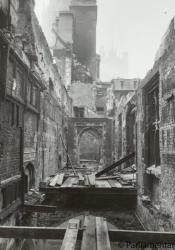The London Blitz
The Blitz was a bombing campaign from Germany against the United Kingdom during World War two. It started on September 7th, 1940, known as “Black Saturday”. After that, the bombing continued for 57 days, and then regular intermittent bombing after that. The bombings on May 10-11 of 1941 were the worst of them all.
During The Blitz civilians hid in air raid shelters and in the tube, however over fourty-three thousand civilians were killed over the course of the raids, 1436 of those on May 10-11 - not including the wounded. Citizens were terrorized nightly by these raids, which scattered all across Britain, not just London. The raids happened day or night. After they were finished, many civilians were homeless.
On the night of May 10, over seven hours, Germans dropped over 700 tons of bombs and 86,000 incendiary bombs across London. The House of Commons in the Palace of Westminster, which had been hit once before, was hit again and the building caught on fire. Throughout the night, there were attempts to stop the fire, but it ultimately destroyed the House of Commons. It was eventually rebuilt, and although the room was ruined, parliament was not deterred and continued to meet elsewhere in the palace after the raids.
Impressively enough, Big Ben, the clock tower also on the Palace of Westminster, remained mostly unharmed. It was hit and lightly damaged, but never destroyed during the Blitz. It stood as a source of hope for the people in London.
“The Blitz around Britain.” Imperial War Museums, https://www.iwm.org.uk/history/the-blitz-around-britain#:~:text=The%20Bl...
“The London Blitz and the Palace of Westminster.” Building of Britain - UK Parliament. https://heritagecollections.parliament.uk/.


